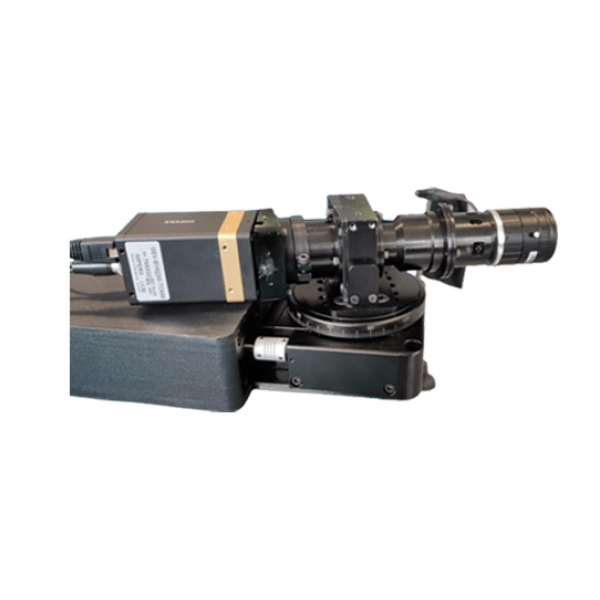Your shopping cart is empty!
Rotational Scanning Hyperspectral Imager
Introducing the ATH3100, a compact and lightweight rotational scanning hyperspectral imaging system. This miniature imager boasts high spatial and spectral resolution, complemented by a wide imaging range. It features a high-stability synthetic lighting source with adjustable power and spectral types, ensuring versatile applications in various industries.
Availability: In Stock
Rotational Scanning Hyperspectral Imager
Product Code: ATH3100
application
Description
Introducing the ATH3100, a compact and lightweight rotational scanning hyperspectral imaging system. This miniature imager boasts high spatial and spectral resolution, complemented by a wide imaging range. It features a high-stability synthetic lighting source with adjustable power and spectral types, ensuring versatile applications in various industries.
The ATH3100 comprises a hyperspectral imager utilizing advanced transmission grating technology for superior aberration correction. Paired with a fully automatic electric rotating stage and four fixed lighting sources, it offers precise imaging capabilities.
Ideal for long-term, large-area scanning, the ATH3100 supports tripod or pole mounting and includes features like automatic calibration and weather monitoring sensors. It meets the demands of environmental monitoring, agriculture, and remote sensing applications, reflecting current trends in hyperspectral imaging technology.
Explore the ATH3100 and revolutionize your imaging capabilities with our cutting-edge rotational scanning hyperspectral imaging systems.
Features
- Rotating scanning imaging with adjustable scanning angle range;
- High-sensitivity hyperspectral imager;
- High-stability, high-blue synthetic lighting source with adjustable power and spectrum;
- High-performance image sensor with excellent cost-effectiveness;
- Full-target high imaging quality optical design with a spot diameter less than 0.5 pixels;
- The objective lens interface is a standard C-Mount, allowing for lens replacement according to user requirements.
- Wavelength range: 400-1000nm, 900-1700nm, or 400-1700nm;
- High spectral resolution: 1.3 nm @ visible light, 3.5 nm @ shortwave infrared;
- Outstanding imaging performance
Serial Number | Indicator | ATH3100 | ATH3100W | ATH3100-17 | ATH3100-25 |
1 | Spectral Range | 370~1000nm | 370~1000nm | 900~1700nm | 1200~2500nm |
2 | Best Spectral Resolution | 1.3 nm | 1.3 nm | 3.5nm | 7.2nm |
3 | Sampling Interval | 0.37nm | 0.37nm | 1.56nm | 2.54nm |
4 | F-Number | F/2.6 | F/2.6 | F/2.6 | F/2.6 |
5 | Detector | CMOS | CMOS | InGaAs CCD | Cooling Type InGaAs CCD |
6 | Detector Interface | USB3.0 | USB3.0 | USB3.0 | USB3.0 |
7 | Detector Power Supply | USB Power Supply,3.4W | USB Power Supply,3.6W | 12V,14.5W | 12V,30W |
8 | Detector Target Area Size | 11.26mm x | 11.26mm x | NA | 6.4X5.12 |
9 | Detector Raw Resolution | 2048 ×1088 | 2048×2048 | 640X512 | 320X256 |
10 | Detector Raw Pixel Size | 5.5 μm x5.5 μm | 5.5 μm x5.5 μm | 15μmx15 μm | 20 μm x20 μm |
11 | Pixel Bit Depth | 12 bits | 12 bits | 14 bits | 14 bits |
12 | | 25 μm, | 25 μm, | 30 μm, | |
13 | Recommended Pixel Merging Method | 4x4 or 2x4 | 4x4 or 2x4 | 1X2 or None | 1X2 or None |
14 | Spatial Dimension Band Count | 512 or 1024 | 512 or 1024 | 640 | 640 |
15 | Spectral Band Count | 300 or 600 | 512 or 1024 | 512 | 512 |
16 | Field of View (FOV) | 15.2°@f=35mm | 15.2°@f=35mm | NA | NA |
17 | Instantaneous Field of View (IFOV) | 0.7mrad @f=35mm | 0.7mrad@f=35mm | NA | NA |
18 | Maximum Frame Rate | 340 fps | 140 fps | 270 fps | 270 fps |
19 | Dimensions | 306 mm x300 mm | 306 mm x300 mm x | 306 mm x300 mm x 162mm | 306 mm x 300 mm x 162mm |
20 | Weight | Less than 8.5 Kg |
Categories:
Hyperspectral Imaging System
Tags:
Raman Microscope
Email me Before Placing Order | ||










